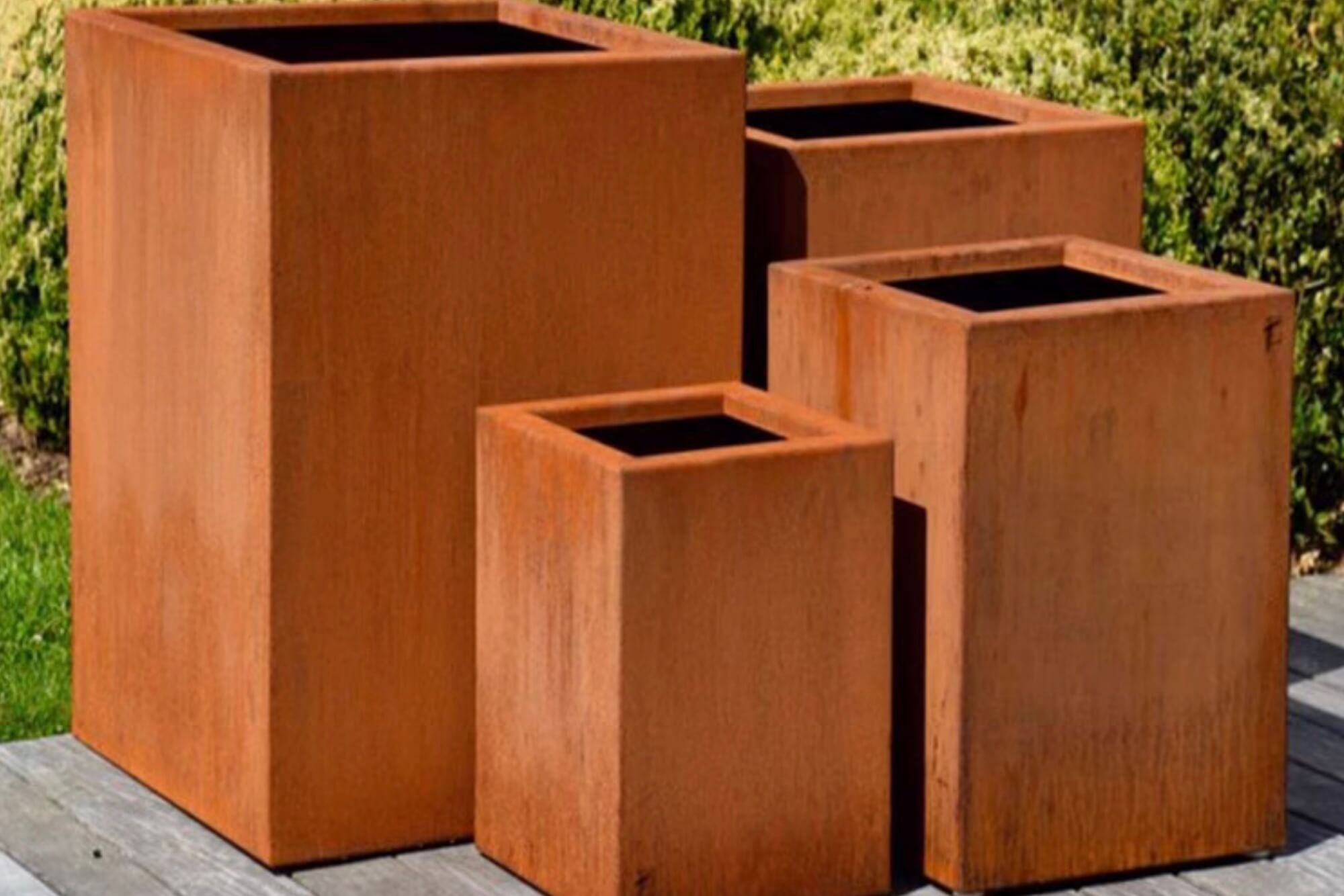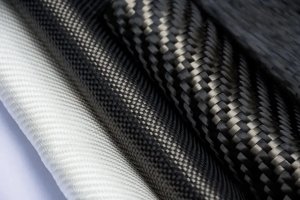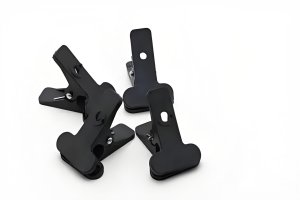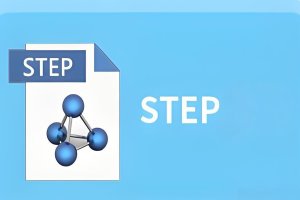Why Designers Love Corten Steel
When I first worked with Corten Steel, I didn’t expect a rusty-looking material to be so beautiful, practical, and in demand. But over the years, I’ve seen how this weathering steel has turned into a favorite among designers—especially those working in architecture, landscaping, and sculpture.
Corten Steel isn’t just about aesthetics. It’s a material that solves real-world design problems. It resists corrosion, requires minimal maintenance, and over time, forms a rich, orange-brown patina that many people find stunning. For outdoor designs that need to be both functional and artistic, it’s hard to beat.
The real magic happens when we combine Corten Steel with CNC technology. I’ve personally worked on projects where intricate cutouts, custom panels, and artistic installations were brought to life with CNC laser cutters. CNC gives designers the power to bring complex patterns to life on a durable material that evolves with time and weather.
In this guide, I’ll walk you through what makes Corten Steel special, how it behaves during CNC machining processing, and most importantly—how you, as a designer or creative, can use it to turn concepts into stunning, long-lasting pieces.
Can Corten Steel Be CNC Processed?
Yes, Corten Steel can absolutely be processed with CNC—laser cutting, waterjet, and plasma are the most common methods. But each technique has its own quirks when it comes to this specific alloy. Below, I’ll break down what you need to know before you dive into production.
What Is Corten Steel, Technically?
Corten Steel is a weathering steel that develops a stable, rust-like appearance after exposure to weather. It forms a protective oxide layer, which slows further corrosion. That layer is key—it makes Corten ideal for outdoor structures and art.
Its composition usually includes:
- Iron (~98%)
- Copper (~0.25–0.55%)
- Chromium (~0.4–0.65%)
- Nickel (~0.2–0.5%)
- Phosphorus (~0.07–0.15%)
That mix increases atmospheric corrosion resistance significantly compared to regular carbon steel.
CNC Compatibility and Behavior
Corten Steel behaves like low-alloy carbon steel during CNC processing, but with some notable differences:
| CNC Method | Suitability | Pros | Cons |
|---|---|---|---|
| Laser Cutting | ✅ Very Good | High precision, great for detailed designs | Needs fume extraction, risk of oxidation burns |
| Waterjet | ✅ Excellent | No heat-affected zones, clean edges | Slower, more expensive |
| Plasma Cutting | ⚠️ Moderate | Fast, good for thick sections | Rougher edges, not ideal for detailed art |
| Milling/Drilling | ⚠️ Caution | Possible but inefficient | Corten is abrasive, wears tools fast |
In my own projects, laser cutting is the go-to choice. It’s accurate, fast, and perfect for custom patterns. But you need a machine powerful enough to handle 3mm–10mm plates reliably.
Recommended Settings for Laser CNC Cutting
Based on tests we’ve run on 4mm and 6mm Corten sheets, here’s a useful reference:
| Plate Thickness | Power (W) | Cutting Speed (mm/min) | Gas Type | Focus Height | Notes |
|---|---|---|---|---|---|
| 3mm | 1000–1500 | 1800–2200 | O₂ | -1mm | Light oxide layer, minimal burr |
| 6mm | 2000 | 1200–1500 | O₂ | -1mm | Some oxidation on cut edges |
| 10mm | 3000+ | 800–1000 | O₂ | -2mm | Post-treatment often needed |
You’ll notice that the use of oxygen as an assist gas speeds up cutting, but it also promotes oxidation. Nitrogen cuts cleaner, but requires more power and is costlier. Choose based on your priorities—precision vs. efficiency.
Key Considerations Before You Cut
1. Watch the Oxide Layer
If the Corten Steel sheet has started to rust before cutting, that can affect laser absorption. I recommend either sandblasting or wire-brushing the surface lightly before cutting.
2. Expect More Tool Wear
If you’re milling or drilling Corten, know that it eats up tooling faster than mild steel. You’ll want high-performance carbide tools.
3. Post-Cut Rust Acceleration
Laser cutting heats the metal. Afterward, you might need to treat the cut zones so they “catch up” and patina evenly with the rest of the surface.
My Experience with Waterjet vs. Laser
Last year, we did two identical signage panels for a public park. One was cut with laser, the other with waterjet. The waterjet one had beautifully clean edges and no discoloration—but it cost 40% more and took three days longer to schedule. The laser one, while slightly oxidized at the edges, worked just fine after a quick vinegar bath and manual brushing.
Unless your project requires ultra-clean lines or very thick material, I’d recommend laser cutting for most designers working with Corten Steel.
Creative CNC Applications of Corten Steel
This is the part I personally enjoy the most. Corten Steel really shines when we step beyond its technical properties and start exploring what we can create with it. Over the years, I’ve seen some truly inspiring applications—everything from delicate garden screens to bold public art. The fusion of Corten Steel + CNC gives designers a rare combination of durability, expressiveness, and material honesty.
In this chapter, I’ll walk through high-impact examples, design patterns that work well, and things I’ve learned working directly with this beautiful material.
🌆 Architectural Panels & Facade Screens
Corten Steel is often used to wrap modern buildings in character and texture. CNC cutting allows architects to go beyond flat panels by integrating patterns that filter light, control privacy, and create visual movement.
We once worked on a hotel renovation in Denver. The design called for a “broken geometry” facade pattern, cut into 5mm Corten sheets, mounted 30cm off the wall. During sunset, the shadows cast across the surface changed every minute. CNC made that possible—without it, the pattern would’ve been prohibitively complex to fabricate.
🛠 Suggested CNC Pattern Types:
- Organic/flowing lines (simulate erosion/weather)
- Geometric tessellation (hexagons, triangles, grids)
- Text-based patterns (poems, quotes, branding)
- Regional/cultural motifs (Arabic mashrabiya, Chinese latticework)
| Pattern Type | Visual Impact | CNC Difficulty | Best Use Cases |
|---|---|---|---|
| Organic Cutouts | High | Medium | Sculptures, landscape features |
| Geometric Panels | Medium | Low | Facades, privacy screens |
| Typography & Symbols | High | High | Branding, signage, civic art |
| Minimalist Grids | Subtle | Low | Lighting enclosures, fencing |
Design Tip: Leave minimum 3mm spacing between cut lines in intricate patterns to avoid distortion during laser cutting.
🪑 Landscape Furniture, Signage & Fixtures
Corten Steel is practically made for landscape architecture. It resists wind, rain, snow, and even vandalism better than powder-coated mild steel. Add CNC, and you can embed branding, park maps, or artistic flourishes directly into benches, bins, planters, or wayfinding signs.
In my own practice, we’ve used 4mm CNC-cut Corten to create folded bench structures for university campuses. They aged gracefully—no repainting required even after 6 years.
| Landscape Item | Avg. Corten Thickness | Recommended CNC Type | Notes |
|---|---|---|---|
| Planters | 3–5mm | Laser / Waterjet | Allow for drainage cutouts |
| Benches | 4–6mm | Laser | Add folds or welded joints |
| Signage Panels | 2–3mm | Laser | Use backlighting with CNC patterns |
| Bollards / Dividers | 6–10mm | Plasma / Waterjet | Add engraving or recessed text |
One trick I learned: combine laser-cut Corten signage with back-lit acrylic mounted behind the cutouts—it creates a gorgeous night-time glow, especially in parks or museums.
🎨 Public Sculptures and Installations
This is where Corten Steel becomes more than just a material—it becomes a narrative tool.
Sculptors love it because it holds sharp lines and rough textures at once. Municipalities love it because it requires no ongoing maintenance. CNC makes it possible to cut even large-scale figurative shapes, negative silhouettes, or abstract volumes with repeatable precision.
Some real-world examples I’ve seen:
- A tree of life sculpture at a city roundabout in Oregon
- Interlocking Corten “leaves” at a botanical garden
- A giant sundial with CNC-etched astronomical figures
Design Tip: For structural pieces, use 8mm+ Corten and ensure all joints are reinforced. Post-cut sealing helps the piece age consistently across all surfaces.
📸 Visual Case Gallery
Case 1: “Light Weave” Facade – Seattle, WA
- Material: 4mm Corten Steel
- CNC Process: Laser cut, 130+ panels
- Design: Parametric dots increasing in size
- Effect: Light diffusion + pattern shift with time of day
Case 2: Botanical Garden Wayfinding Totems – Berlin, Germany
- Material: 6mm Corten
- CNC Process: Waterjet with recessed lettering
- Design: Local flora silhouettes + multi-language info
- Effect: Timeless, blends into environment
Case 3: Rusted Poetry Wall – Austin, TX
- Material: 3mm Corten
- CNC Process: Laser cut, typographic layout
- Design: Local poet’s lines etched across 20m length
- Effect: Emotional, poetic integration into public space
🧠 Design Considerations for Creative CNC + Corten Projects
Here’s a table that outlines key variables I always review when designing Corten CNC pieces:
| Variable | Why It Matters | Recommendation |
|---|---|---|
| Minimum line width | Prevents heat distortion & warping | ≥3mm (for laser) |
| Maximum pattern density | Ensures structural integrity | ≤40% void area per panel |
| Text legibility | Ensures fonts don’t fade with patina | Use stencil fonts or add connector bridges |
| Panel size | Matches standard sheet dimensions | 1.5m x 3m or 1.25m x 2.5m (common formats) |
| Fastening methods | Important for install safety + aesthetics | Bolted tabs, integrated flanges, back frames |
👁️🗨️ Personal Takeaway
Whenever I see a well-designed Corten Steel piece—especially one that’s CNC-cut—I can’t help but stop and admire how it feels permanent, yet alive. It changes with the weather, absorbs the environment, and gets more beautiful with age. That’s rare in materials we work with today.
Post-Cutting Finishes and Patina Treatment
So you’ve cut your Corten Steel using CNC. Now what?
The job isn’t finished when the machine stops. Corten Steel is one of those materials where the real design continues after installation. The rust patina will evolve over weeks and months. But to make it look right—and to make sure it ages evenly and predictably—post-processing is essential.
This chapter will walk you through what I’ve learned in the field about rust acceleration, sealing methods, surface treatments, and how to manage expectations around color change.
🔄 Understanding the Rusting Process
Corten Steel doesn’t rust like mild steel. Its surface develops a protective oxide layer that prevents deeper corrosion. That layer evolves based on:
- Humidity
- Air pollution
- Surface treatment
- Drainage and water flow
- Installation angle (vertical vs. horizontal)
On average, natural patina formation takes 6–12 months, depending on your climate. In a dry region like Arizona, it could take over a year. Near the coast or in a rainy area, it might only take 2–3 months.
Here’s how the patina typically evolves:
| Timeframe | Surface Color | Patina Stage | Notes |
|---|---|---|---|
| 0–2 weeks | Metallic silver-gray | No patina | Freshly cut steel |
| 2–6 weeks | Light orange-brown | Early oxidation | Dusty and uneven |
| 2–4 months | Rich orange-red | Active weathering | Can cause runoff staining |
| 6–12 months | Deep brown-red | Protective patina stabilizes | Color flattens, matte texture |
| 1+ year | Dark brown | Mature patina | Minimal future change |
Designers should communicate this timeline to clients. I’ve had more than one customer panic in month two when their panels looked streaky or “unfinished.” That’s normal. The material is doing its thing.
⚡ How to Accelerate Rusting (When You’re on a Deadline)
Sometimes, you can’t wait six months. Especially in showrooms, exhibitions, or short-deadline projects, accelerated patina is needed. Here are a few trusted methods I’ve used personally:
Method 1: Vinegar + Hydrogen Peroxide + Salt Spray
- Mix: 1 liter white vinegar, 500ml hydrogen peroxide, 2 tablespoons table salt
- Spray onto clean Corten surface
- Repeat every 2–4 hours for 1–2 days
- Result: orange-brown patina appears within hours
Method 2: Commercial Rust Accelerators
Brands like SurFin or Sculpt Nouveau offer formulas designed for artists and metalworkers. These are more predictable, but pricier.
Method 3: Outdoor Mist Tunnels (for large pieces)
If you’re doing architectural panels, consider building a misting rack or lightly watering the surface in a controlled outdoor space. Combine with airflow and sunlight for faster results.
Tip: Always degrease the steel before applying any rust accelerant. Factory oils will block oxidation.
🛡️ Sealing Options: When and Why You Should Use Them
Not all Corten pieces should be sealed. But in some cases, it’s highly recommended:
- Indoor installations (no water = no protective layer formation)
- Signage near light-colored stone or concrete (avoids runoff staining)
- Artwork with intentional rust patterns (preserve visual design)
- Urban environments with graffiti risks
Common Sealers:
| Sealer Type | Finish | Protection Level | Recommended Use Case |
|---|---|---|---|
| Clear Matte Polyurethane | Invisible | Medium | Indoor decorative panels |
| Satin Rust Sealers | Slight sheen | High | Signage, furniture |
| Beeswax or Oil Finish | Soft matte | Low | Sculptures with “alive” feel |
| Automotive Clear Coats | Glossy | Very High | Urban or harsh environments |
I personally prefer matte polyurethane for most signage and architectural uses. It doesn’t interrupt the look but offers real protection.
🧪 Surface Enhancements (Optional but Worth Considering)
If you want to get creative, here are some fun surface modifications I’ve tried:
- Etching the steel pre-rusting (acid stencils)
- Layered rust masking (rust first, then CNC cut)
- Burnishing rusted areas with a wire brush for variation
- Adding brass or stainless inlays to cut areas
Just remember: once sealed, the oxidation stops. You’re “locking in” the current look, so time your seal coat wisely.
📦 Post-Processing Checklist (Downloadable as PDF)
Before sending your Corten CNC project out the door, double-check the following:
| Task | Done? | Notes |
|---|---|---|
| Surface cleaned of grease/oil | ✅/❌ | Use acetone or alcohol |
| Rust accelerated (if needed) | ✅/❌ | Only if client wants pre-patina |
| Rust fully dried | ✅/❌ | Wet patina can trap moisture under seal |
| Seal coat applied (if needed) | ✅/❌ | Choose type based on location/use |
| Mounting points verified | ✅/❌ | Account for expansion/contraction |
This checklist has saved me a lot of headaches over the years. You only forget once to fully dry a patina before sealing—and then you learn why it matters.
CNC + Corten for Designers, Fabricators, and Buyers
Not everyone approaches Corten Steel from the same angle. As a designer, I care about the final visual impact. But when I work with CNC operators or procurement managers, I’ve learned how differently they think—cost, lead time, equipment wear, shipping risk. Each perspective matters, and understanding them leads to better decisions.
In this chapter, I’ll break down the needs and best practices for three main user groups:
- 🎨 Designers & Architects
- 🏭 Fabricators / CNC Technicians
- 📦 Project Managers / Buyers
🎨 5.1 For Designers & Architects
If you’re a creative professional working in architecture, landscape, or installation art, you probably fall into this group. Here’s what matters most when designing for CNC-cut Corten Steel.
✔ CAD File Best Practices
Your CNC partner needs clean vector data. I’ve seen too many projects delayed because someone submitted a JPEG or low-res PDF. Use .DXF or .SVG, and convert all fonts to outlines before sending.
| Design File Element | Designer Responsibility | Notes |
|---|---|---|
| Line thickness | Set all cut lines to hairline | Avoid confusion between cut/engrave lines |
| Text/fonts | Outline all fonts | Prevent substitution errors |
| Layers | Use separate layers for cut vs. engrave | Saves operator time |
| Dimensions | Include dimensions as text | Helps verify scale pre-production |
✔ Pattern Design Tips
Corten Steel weathers unevenly depending on surface exposure, so balance large solid areas with open cutouts. If you go too dense with your pattern, you risk compromising structural integrity.
- Keep void areas <40% per panel
- Avoid ultra-thin bridges (they may warp during oxidation)
- Use stencil fonts to prevent islands in text
✔ Communicating Rust Intent
I’ve learned to always tell clients how rust will evolve. Even better: include a rust development diagram in your presentation. Show the piece at 2 weeks, 2 months, and 6 months. This sets expectations and avoids panic when the steel “looks weird” mid-process.
🏭 5.2 For CNC Technicians & Fabricators
As someone who’s worked closely with fabrication shops, I know the questions they ask first:
“What grade of Corten is this?”
“How thick is the sheet?”
“Do they want a full edge cleanup?”
“Are they expecting a post-patina match?”
✔ Machine Setup Tips
Corten Steel isn’t hard to cut—but it can mess with your gear if you’re not prepared.
| Parameter | Recommendation | Why It Matters |
|---|---|---|
| Nozzle condition | Check regularly | Oxidizing steel can clog older nozzles |
| Fume extraction | Ensure good airflow | Rust oxides are harsh on lungs and optics |
| Material clamps | Tighten more than usual | Prevent vibration in larger sheets |
| Focus alignment | Slightly below surface (-1mm) | Helps minimize burr with oxygen cutting |
✔ Edge Cleanup and Post-Processing
Some clients will expect “ready to install” panels. Others are okay with raw cuts. Clarify whether they want:
- Deburred edges
- Rust-accelerated surfaces
- Mounting holes pre-cut
- Protective film masking
If they want a full-service finish, it’s worth quoting for the cleaning, acceleration, and sealing process as an optional add-on.
✔ Material Waste and Nesting
Corten Steel can be pricey—especially in thicker gauges. Use nesting software to optimize yield. I’ve seen shops reduce waste by over 20% using automated layout tools.
📦 5.3 For Buyers, Project Managers, and Contractors
Procurement often gets left out of these guides—but their role is critical. If you’re sourcing Corten Steel components for a build, sculpture, or signage project, here’s what to focus on.
✔ Material Sourcing Tips
Buyers often ask me: “Is Corten Steel hard to get?”
Not really—but you need to specify correctly.
- In the US, look for A588 (for structural) or A606-4 (for sheet metal)
- Ask suppliers if they stock pre-weathered panels (saves time on patina development)
- For custom work, request mill certs or chemical composition sheets
| Supplier Type | Best For | Warning |
|---|---|---|
| Steel Service Centers | Standard Corten sheets | May require min. order qty |
| Specialty Metal Shops | Pre-cut small volumes | Higher price per sheet |
| CNC Vendors w/ Material | Full service, turnkey | Always clarify material grade |
✔ Shipping and Packaging
Raw Corten can rub and stain during transport. CNC-cut pieces with intricate cutouts are fragile.
- Request edge guards or foam interleaves
- Use crates for large panels, especially over 5ft in length
- Label which side is “face up” if pattern matters
Also: inform the installer not to touch the surface with greasy hands. Oils can block patina formation in those spots—it’s happened on a museum project I consulted on.
✔ Budgeting and Lead Times
Designs using Corten Steel tend to be high-visibility and high-cost. Make sure budgets account for:
- CNC cutting time (can be slower than mild steel)
- Post-processing labor (cleaning, sealing)
- Scrap/waste buffer (typically +10%)
Standard lead times I’ve seen:
| Process Step | Typical Timeframe |
|---|---|
| Sheet metal sourcing | 2–5 business days |
| CNC cutting | 2–7 business days |
| Patina treatment & drying | 3–10 days (weather dependent) |
| Sealing & finishing | 1–2 days |
Tools & Resources for Working with Corten Steel
When I first got into working with Corten Steel, it was hard to find reliable resources—especially ones geared toward designers. I had to dig through fabricator forums, call steel yards, and learn the hard way by messing up files or buying the wrong grade.
Now, after dozens of successful CNC-Corten projects, I’ve built up a small but powerful toolkit that saves time, avoids mistakes, and improves collaboration between creative and technical teams. Here’s what I use—and what I recommend.
🧰 Essential Tools for Designers and Fabricators
✅ 1. File Templates & Laser-Ready Guides
If you’re working with CNC service providers, clean files make a huge difference. I use and share template files with:
- Standard material dimensions (4′ x 8′, 5′ x 10′)
- Cutout margin guides (3mm spacing)
- Drill/mounting hole symbols
- Scale bars + unit markers
Recommended File Formats: .DXF, .SVG, .EPS (vector only)
I keep a folder of reusable stencil patterns, rust-compatible fonts, and ornamental cutout elements that I modify per project. If you’re just getting started, build your own reference library—it speeds up design 10×.
✅ 2. Rust Patina Color Chart
Many clients have no idea what “rust” actually looks like in its different stages. I use a 4-stage patina color chartbased on actual sample panels we’ve created under different conditions.
| Patina Stage | Visual Description | Surface Texture | Time (Typical) |
|---|---|---|---|
| Stage 1: Fresh | Bare gray metal | Smooth, matte | Day 0 |
| Stage 2: Active | Bright orange streaks | Lightly powdery | 1–3 weeks |
| Stage 3: Mature | Deep orange-brown | Drier, rougher | 2–3 months |
| Stage 4: Final | Dark brown, non-glossy | Dense, matte, hard | 6–12 months |
I print these as postcards and show them in client meetings. They work.
✅ 3. Material Thickness & Cutting Guidelines
Corten behaves slightly differently than mild steel when it comes to cutting tolerance. Below is a cheat sheet I’ve used repeatedly:
| Thickness (mm) | Recommended Cut Method | Common Use | Design Tips |
|---|---|---|---|
| 2mm | Laser | Signage, wall art | Max detail; support fragile elements |
| 3mm | Laser / Waterjet | Panels, planters | Most versatile for design + cost |
| 5mm | Laser / Waterjet | Screens, benches | Leave wider bridges for structure |
| 8mm | Plasma / Waterjet | Bollards, sculpture base | Edge smoothing recommended |
| 10mm+ | Plasma | Structural work | Allow for taper + post-processing |
Keep this data nearby when quoting or deciding layout geometry.
🔧 Recommended Suppliers & CNC Services
🏗️ US-Based Steel Suppliers
| Supplier Name | Location | Specialty | Notes |
|---|---|---|---|
| CortenAZP | Arizona | A606/A588 sheets & coil | Also stocks pre-patinated materials |
| Metal Supermarkets | Nationwide | Sheet metal retail | Small order friendly |
| Central Steel | Midwest | Structural Corten + flat bar | Industrial-grade sourcing |
🔩 CNC Cutting Services
| Company Name | Region | Services | Notes |
|---|---|---|---|
| SendCutSend | USA | Online laser cutting, incl. Corten | Quick, great for small batches |
| Xometry | USA/Global | On-demand CNC & fabrication | Supports bulk architectural work |
| Local Makerspaces | Global | Waterjet, laser, CNC access | Budget-friendly, good for prototyping |
If you’re in Europe, Kloeckner Metals is a solid source with good logistics and a strong Corten inventory.
📁 Downloadable Resource Pack (What I Usually Share)
Here’s what’s in my typical designer pack for Corten CNC projects:
- ✅ DXF starter templates (standard panel sizes + cut safe zones)
- ✅ Rust patina color stages (with photo references)
- ✅ Sealing options cheat sheet (spray, brush, matte/gloss)
- ✅ Font library: 8 rust-compatible stencil fonts
- ✅ CNC cutout spacing calculator (in Excel or Sheets)
If you’re building content or tools for your own team or clients, bundling resources like this builds trust—and cuts revision time in half.
💡 Useful Add-Ons
These tools aren’t essential—but they’ve saved me more than once:
- Rust blocking film: for areas that need to remain clean or un-rusted
- Handheld pH tester: monitor water for accelerated rusting
- Digital depth gauge: check uniformity of laser-cut grooves or engraved patterns
- Steel expansion calculator: useful for large public art installations (Corten expands!)
👁️🗨️ Final Thoughts
Having the right tools isn’t just about efficiency. It’s about control. Corten Steel is alive—it changes, reacts, matures. With CNC, you can sculpt that evolution. But without the right planning, you’re just guessing.
These resources have helped me move from “cool idea” to “delivered result” more reliably than anything else.
FAQ
This section brings together the most common and important questions I’ve been asked over the years—by designers, builders, and CNC technicians—about using Corten Steel in real-world projects.
These FAQs are optimized to help users searching for very specific information about Corten Steel, while keeping answers short, clear, and actionable.
1. What is Corten Steel, and how is it different from regular steel?
Corten Steel is a weathering steel that forms a protective rust-like patina over time. Unlike regular carbon steel, it doesn’t flake apart when it rusts—its surface layer prevents deeper corrosion.
2. Can Corten Steel be cut with a CNC machine?
Yes. Corten Steel is compatible with CNC cutting methods including laser, waterjet, and plasma. Laser cutting is most commonly used for precision work.
3. What’s the best CNC method for cutting Corten Steel?
For design work, laser cutting is best. For thick plates or when avoiding heat is critical, waterjet cutting is ideal.
4. Does the rust layer interfere with CNC cutting?
It can. A heavy patina can affect laser beam absorption. Clean the surface before cutting for best results.
5. What thicknesses of Corten Steel are commonly used?
2–6mm is common for signage, facades, and decorative panels. 8–12mm is used for structural elements or sculpture bases.
6. Do I need to pre-treat Corten Steel before CNC machining?
Yes, degreasing the surface and removing early-stage rust helps ensure clean, precise cuts.
7. Can I engrave Corten Steel using CNC?
Absolutely. Corten can be engraved, etched, or partially recessed using CNC routers or fiber lasers.
8. How do I speed up the rusting process?
Use a mix of vinegar, hydrogen peroxide, and salt to spray the surface. Or buy commercial rust accelerators for more predictable results.
9. How long does it take Corten Steel to rust naturally?
Typically 6–12 months, depending on the climate. Coastal and rainy areas develop patina faster.
10. Can I seal Corten Steel after it rusts?
Yes. Use matte polyurethane, clear acrylic sealers, or wax finishes to freeze the rust tone and reduce staining.
11. Where can I buy Corten Steel for CNC projects?
In the US, try CortenAZP, Metal Supermarkets, or Xometry. Be sure to specify A606 or A588 grades.
12. Is it possible to paint Corten Steel?
Technically yes, but it defeats the purpose. The patina is the design. If you must, use a primer made for weathering steel.
13. Will Corten Steel stain concrete or light surfaces nearby?
Yes—during early weathering stages, it can bleed rust onto adjacent materials. Seal it or design drainage to avoid this.
14. Is Corten Steel safe to use indoors?
Yes, but you should pre-rust and seal it. Indoor environments often don’t have enough moisture to trigger the patina naturally.
15. Can I combine Corten with other metals?
Yes, but be cautious. Galvanic corrosion can occur between dissimilar metals in moist environments. Use isolation pads or sealants.
16. What are the most common design applications for CNC + Corten?
- Building facades
- Landscape walls and screens
- Signage and sculpture
- Outdoor furniture
17. Is Corten Steel environmentally friendly?
Yes. It lasts decades, reduces the need for paint, and is 100% recyclable.
Further Reading & Authoritative References on Corten Steel
For readers seeking in-depth knowledge about Corten Steel, its properties, applications, and best practices, the following resources are highly recommended:
- Weathering Steel – Wikipedia
An extensive overview of weathering steel, detailing its history, properties, and applications.
🔗 https://en.wikipedia.org/wiki/Weathering_steel - Uncoated Weathering Steel in Structures – FHWA Technical Advisory T 5140.22
Guidelines from the Federal Highway Administration on the application of uncoated weathering steel in highway structures.
🔗 https://www.fhwa.dot.gov/bridge/t514022.cfm - Uncoated Weathering Steel Reference Guide – AISC/NSBA
A comprehensive guide by the American Institute of Steel Construction and the National Steel Bridge Alliance on the use of uncoated weathering steel in bridge construction.
🔗 https://www.aisc.org/nsba/design-resources/uncoated-weathering-steel-reference-guide/ - Steel Bridge Design Handbook – Chapter 19: Corrosion Protection of Steel Bridges
This chapter provides detailed information on corrosion protection strategies for steel bridges, including the use of weathering steel.
🔗 https://www.aisc.org/globalassets/nsba/design-resources/steel-bridge-design-handbook/b919_sbdh_chapter19.pdf - Improved Corrosion-Resistant Steel for Highway Bridge Construction – FHWA Report
A research publication discussing advancements in corrosion-resistant steels for bridge construction, including performance evaluations.
🔗 https://www.fhwa.dot.gov/publications/research/infrastructure/bridge/11062/11062.pdf - Corrosion Protection and Durability Resources – AISC/NSBA
A collection of resources focusing on corrosion protection and durability considerations in steel bridge design and construction.
🔗 https://www.aisc.org/nsba/design-and-estimation-resources/corrosion-protection-and-durability-resources/
Other Articles You Might Enjoy
- Is Surgical Steel CNC Machining-Friendly? Material Properties and Machining Challenges Explained
Is Surgical Steel CNC-Friendly? I still remember the first time I clamped a bar of surgical steel into a CNC mill. It looked just like any other stainless steel—shiny, dense,…
- 18/8 Stainless Steel Machining Guide: Everything You Need to Know
I. Introduction If you've worked with stainless steel before, you've probably come across the term 18/8 stainless steel. It's one of the most common stainless alloys used in CNC machining—and for…
- 18/0 Stainless Steel Machining: Performance, Parameters, and Use Cases
Introduction Working in manufacturing and materials engineering for over a decade, I’ve seen trends rise and fall. One that’s recently caught my attention—and many in our field—is the growing interest…
- Can You Machine Spring Steel? A Complete Guide for Engineers and Machinists
What Is Spring Steel and Why Does It Matter? “Can you machine spring steel?”That was the exact question I asked myself years ago when I got handed a drawing for…
- Tensile Strength of Steel Explained for Engineers and Machinist
Introduction The tensile strength of steel is the heartbeat of engineering and machining. It’s the maximum stress a steel part can endure before snapping, and it’s a make-or-break factor for…
- Custom Stainless Steel Screws with CNC Machining: Techniques, Tools, and Tips
Introduction I first realized how crucial Stainless Steel Screws are in CNC machining projects when I worked on a small manufacturing assignment.We needed durable, corrosion-resistant fasteners for an outdoor piece of equipment,…
- Stainless Steel Fasteners: What Designers and CNC Machinists Must Know
Why Stainless Steel Fasteners Matter in CNC Applications As someone who has spent significant time around CNC machines and designing mechanical assemblies, I've learned one critical truth: the smallest parts…
- Mastering Machining of Galvanized Steel: Techniques, Challenges & Solutions
Chapter 1: Introduction – Understanding Galvanized Steel and Machining Galvanized steel is everywhere around us. From the cars we drive to the buildings we live in, galvanized steel is a…






